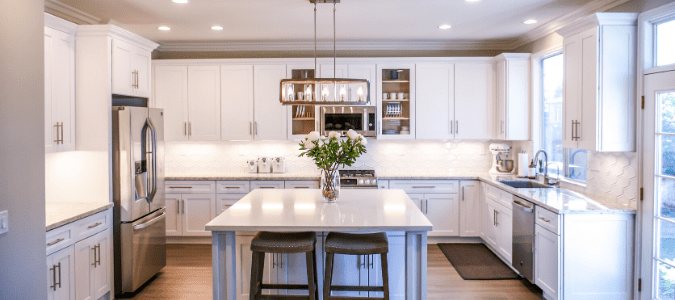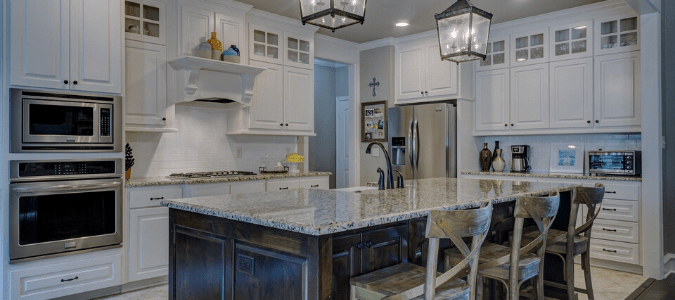
Heater not turning on, no matter what you do to try to get it to work? On a cold day, it can be worrisome to crank up the heat in your home, only to find you’re still feeling chilly. Fortunately, there are a few things a homeowner can do to try to figure out what’s gone wrong. Be forewarned, however—chances are, the problem may be too involved for a simple fix. When this happens, it may be necessary to call in a professional who can diagnose the issue and determine the right way to resolve it. It may turn out to be a small repair, such as a broken part that can be replaced. If it’s a more extensive problem, the entire heater may need replacing, especially if yours is an older model.
When your heater is not turning on, the first thing to check is whether the thermostat on the wall is set to the heat mode, rather than cool. While this may sound silly at first, sometimes settings can get changed accidentally, without your realizing it. If it is set to the proper mode, the next step is to make sure the desired temperature is set to a higher degree than the ambient temperature inside your home. If it’s set to the same degree or lower, your heater won’t run, even if it’s turned on and working properly.
The next thing to check is your filter. If you don’t change out the filter regularly, or wash it regularly if yours is a reusable one, it will get too dirty to allow air to pass through properly. Filters should be changed out or washed at least once every three months. If you live in a dusty home or climate or have indoor pets that shed lots of fur, your filters may need changing even more often.
If you don’t change the filter often enough, it will become clogged with dust, dirt and hair over time. As the filter gets dirtier and air has a harder time passing through, it becomes more likely that the furnace’s internal safety controls will shut the system down. This is a safety measure built into many furnace systems and results in the furnace short cycling. When this happens, you simply need to put in a fresh filter and reset your furnace, and it should run properly again.
If the heater is turned on, the desired temperature is set to a higher degree than the ambient temperature, and the filter is clean, but the heater still won’t turn on, the next thing to check is the gas supply to the heating system. If the gas valve gets flipped to the OFF position, the heater won’t ignite. If your heater isn’t working properly, make sure the gas valve is turned on, and also that the pilot light is lit. Sometimes furnace pilot lights blow out due to a nearby draft or debris that has collected on the pilot. If it’s that’s what you suspect has happened, you’ll need to contact a professional to clean it and relight the pilot for the heater to work.
If you smell gas when you turn the system on, this could indicate a gas leak somewhere in the system, which is a dangerous situation requiring immediate professional attention. If this happens, turn the furnace off and contact a professional as soon as possible to come to inspect your system and determine the nature of the problem. In many cases, it’s better to reach out to an AC specialist before calling the gas company, since the gas company’s protocol will likely be to shut off your gas meter. When that occurs, the homeowner must make sure everything in the home is up to code before the gas company will turn your meter back on again. To avoid this, contact a heating specialist first to see if they can resolve your heating problem without your gas being turned off.
It’s important to note that funny smells are relatively normal the first time you turn on the heater in the winter. Gas has a particular smell, and if you detect the scent of gas, you should not ignore it. If what you’re smelling has a different scent, however, and if it’s the first time you’ve turned on the heater in several months, it’s likely that it’s just the smell of dust that had collected on the heat exchanger burning off. This is nothing to worry about, and the smell should go away after just a few hours. If the smell persists, turn off your heater and contact a heating and cooling professional for help.
If none of the above steps fixes your heater, it’s time to call in a specialist to diagnose the problem and determine the right approach to resolving it. Heaters have several different components that can break, causing the system to fail. Heaters built in the 1990s or later may also display a code that will reveal the source of the problem to the service technician.
The best way to deal with heater problems, however, is to avoid them in the first place through regular maintenance. Gas furnaces typically last 10 to 20 years, and they’re usually replaced when the AC in a home needs replacement as well. This is because it’s best for heating and cooling components to be the same brand, model and year, as this helps to increase efficiency in your system and prevent breakdowns.
To extend your furnace’s lifespan as much as possible, change out your filters on a regular basis, and have a professional perform heating and cooling maintenance twice a year, preferably once before spring and once prior to the fall. These measures will go a long way toward keeping your system in excellent working order and heading off problems before they develop into major, costly repairs.
To understand why it’s important to contact a specialist as opposed to trying to make repairs yourself, it’s helpful to learn about all of the different components that work together in a central heating system.

How Central Heating Components Work
Most homes have central heating, which refers to a heating system that warms the whole house via heat generated at a central point and, from there, carried outward to multiple rooms. This can include houses equipped with a boiler and radiators in the main rooms as well as homes with furnaces that force heated air into the rooms through the same registers (or vents) that blow out cool air generated by the AC in the summer. In general, central heating components include:
- a furnace or boiler;
- the fuel they burn in order to generate heat;
- the radiators or registers in the home that deliver heat to its rooms and
- the pipes or ducts that carry the heat in its hot-water or hot-air form to the separate areas of the house.
From there, the central heating system only becomes more complex. A furnace, for example, is made up of many different components including gas (in most cases) as well as electricity, a pilot light (in a gas-powered furnace), a blower that forces the heated air through the ducts and registers into the rooms of the home, and more. Similarly, boilers are made up of many different individual components. Since there are so many different parts involved in the heating system that keeps your home warm in wintertime, there’s a lot that can go wrong as the system ages, especially if it isn’t properly maintained over time.
When a problem occurs and your central heater isn’t working properly, it’s often not a good idea to attempt to fix it yourself unless you’re a licensed professional, yourself. If you aren’t thoroughly familiar with heaters and you try to fix it yourself, you risk voiding any manufacturer warranties that may exist for the system’s components, and you also risk creating a bigger problem than the one you started out with. For most people, the best course of action is to contact a professional to service the heating system, determine the source of the problem and fix it. This is typically faster, more efficient, and ultimately less expensive than trying a do-it-yourself approach.

What to Do if You Have a Broken Heater
If you suspect your heater is in need of repair, the best thing you can do is to reach out to a heating and cooling professional to inspect the heating system’s components and determine the nature of the problem. It may be a relatively easy fix—a minor part that needs to be repaired or swapped out, for example—but it may be something more involved, and it’s even possible your furnace needs to be replaced, if it’s an older model with a lot of wear and tear.
In most homes, a good furnace will last at least 10 years. If you maintain yours properly, changing your filters every few months (or more often, depending on the type of filter) and having the system serviced annually by a service professional, your heater could remain in good working order for up to 20 years.
Hiring a licensed professional to tackle the problem is often the best bet for the average homeowner, since specialists have the experience needed, as well as access to the right skills and diagnostic tools, to get any needed heating and cooling repairs done quickly and correctly. A professional can also advise you on ways to extend the life of your heating system and maintain your system properly so you can avoid problems before they occur.
ABC Can Diagnose and Repair Your Heating Problem
It’s not worth it to try to make repairs to your heating system if you don’t have the proper expertise. When you run into an issue with your heater, contact ABC Home & Commercial Services. We have specialists available 24/7 who will be able to diagnose your heating problem quickly. From there, you can trust us for honest advice on whether it would be more cost-efficient to repair or replace your system and make whatever fixes are needed.
